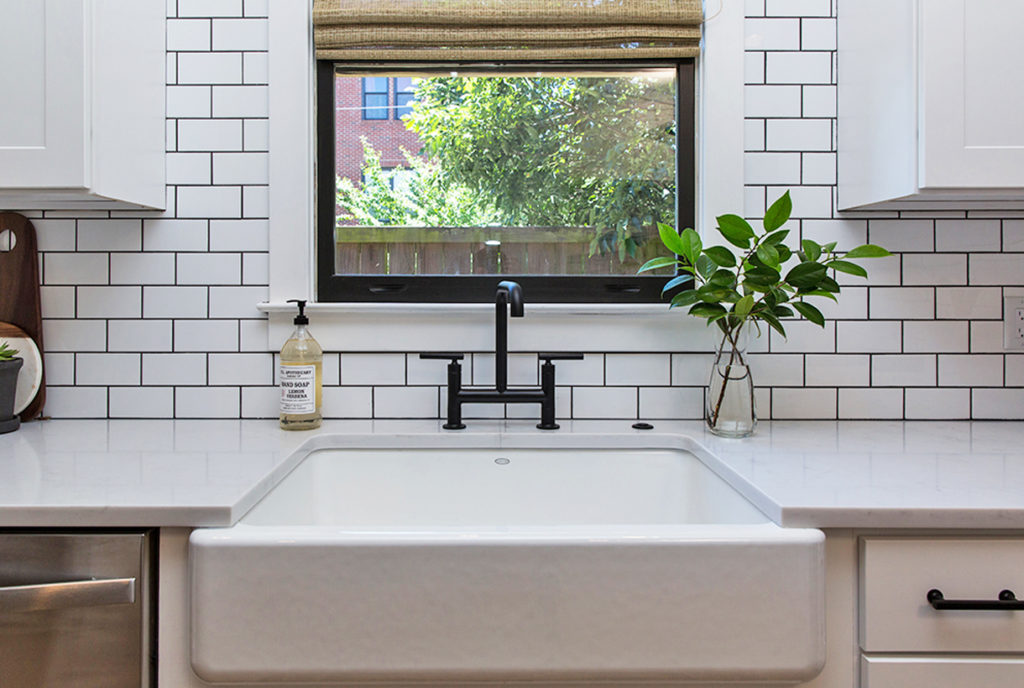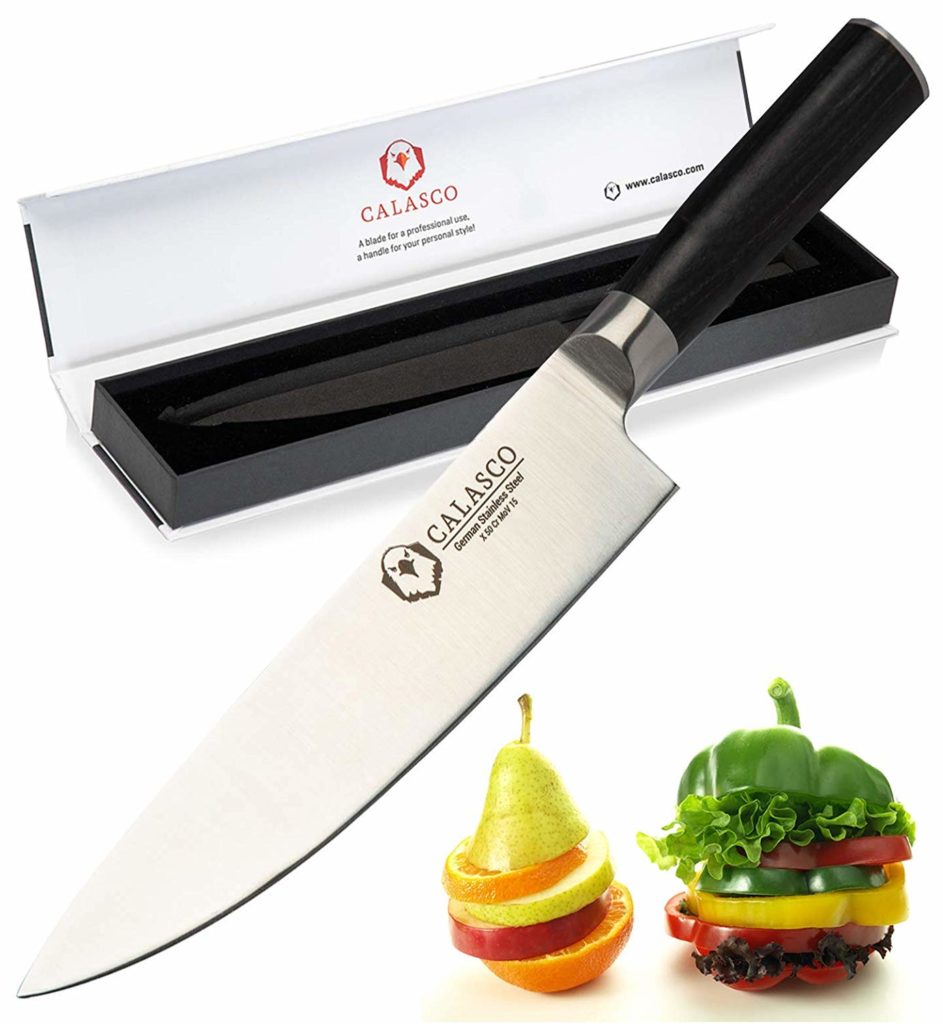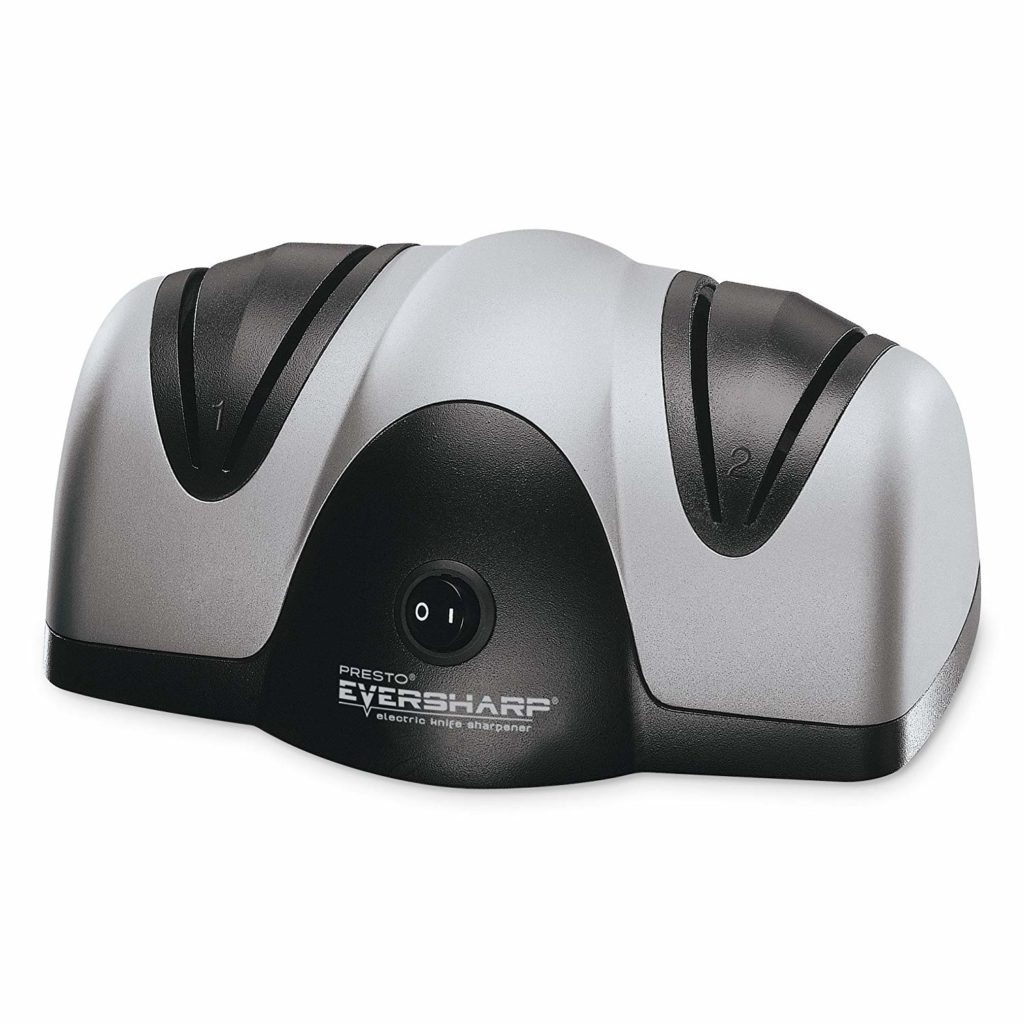The kitchen backsplash is placed on the kitchen wall between the countertops and the wall cabinets. It protects the walls and especially the zones behind the range, the sink, and the places where you prepare the food, from staining. Your backsplash will stain, but the materials appropriate for it are usually easy to clean and maintain and are a far better option than just a bare painted wall or wallpaper.
The kitchen backsplash also has aesthetic value. With colors, patterns or textures appropriate for a backsplash you can improve the visual appeal of your kitchen, without difficulty and at a reasonable price.
Some backsplashes are only about 4 inches (10 cm) high and are usually a continuation of the countertop. These are not effective, because if you don’t cover the entire area up to the wall cabinets with a backsplash, significant parts of the wall will remain unprotected. With a standard backsplash, about 18 inches (46 cm) high, you will cover the whole area between the countertops and the wall cabinets and you will give your kitchen a finished look.
You might place your backsplash only behind detached zones in your kitchen, such as the range and the sink, thereby attracting attention to them; but a better option is to place a backsplash along the whole length of the room, thus achieving a unified look.
Kitchen backsplash materials
The following materials are popular variants for a kitchen backsplash. Many of them are used for kitchen countertops as well, which means that your backsplash and countertops can be made of one and the same material. The materials are strong, durable and usually easy to clean and maintain. I say usually, because some tiles, stone or metal may require periodic maintenance (sealing or polishing), according to the manufacturer’s instructions.
1. Ceramic and porcelain tiles: these tiles exist in various colors, patterns and textures and may imitate natural stone as well.
2. Metal and metal laminate: with a backsplash from a stainless steel sheet you will give your kitchen a modern and simple look. Besides, its neutral color matches most other colors.
You may use others metals as well, such as copper, zinc, tin, brass or nickel. Some of the metals will change their look with time if you don’t maintain them, and this effect may appeal to you.
As a cheaper variant you may use metal laminate. This is similar to plastic laminate, but is covered with a metal layer.
3. Natural stone: an exceptionally fine material with a unique pattern for each of its layers, making your backsplash different from that of anybody else. It is also extremely durable.
You may use various kinds of stone. For example granite, marble or limestone.
4. Solid surface: synthetic material, existing in variety of colors, patterns and textures. It may also imitate natural stone.
5. Glass: with a backsplash from glass sheets you will, again, give your kitchen a modern and simple look. And, if you have beautiful pictures on the wall, they can still be seen through the glass, while being protected from damage.
Some other, not so traditional, materials for backsplashes exist as well, such as cork, but they are used more rarely or have yet to gain popularity.
Cork, in particular, is a naturally textured soft material. You may pin notes and recipes on it, but I think it’s not very appropriate for the key zones in the kitchen, such as the range and the sink, because you will find it difficult to clean.
Kitchen backsplash design
If you want a simple look, select a backsplash with the same design as your countertop.
If you are looking for a more vivid effect, select patterned tiles. For example, you could use square tiles, set on a diagonal in contrasting colors, like a checkerboard.
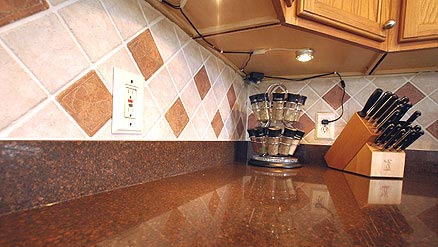
If you have a small kitchen, choose a mirrored backsplash or one with a large pattern. For example, you could use several small accent tiles in combination with large tiles with a simple design. In this way, you will make your room look bigger.
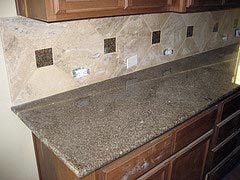
If you want more light on the work surfaces, such as the range, the sink and the countertops, select a light backsplash, because light tones and shiny surfaces reflect the light well.
Since the backsplash is between the countertops and the wall cabinets, it is a good idea for it to match both the colors and the textures of the countertops or wall cabinets, with color being the more important. As far as the shape of the backsplash is concerned, some of the materials above, in addition to standard tiles, also exist as sheets. With sheets there won’t be gaps that have to be filled with grout and this means that you will be able to clean the backsplash more easily. (The grout, which fills the gaps between tiles, gathers dirt with time and requires periodic cleaning.)
If you select standard tiles, allow the larger ones to predominate over any smaller ones, because then there will be fewer gaps to fill with grout, and so less to clean. As far as the grout is concerned, the darker its color, the less the dirt on it will be visible.
Price of kitchen backsplash
The price of your backsplash will be determined by such factors as…
- the size of the area that the backsplash covers.
- the material used.
- the design.
In general, a backsplash made of ceramic or porcelain tiles will be cheaper than one made of stone or metal. However, if you have your tiles custom-made, they might be very expensive.
Kitchen backsplash installation
To be sure of the quality of your kitchen backsplash installation, I recommend that you employ the services of a professional.
